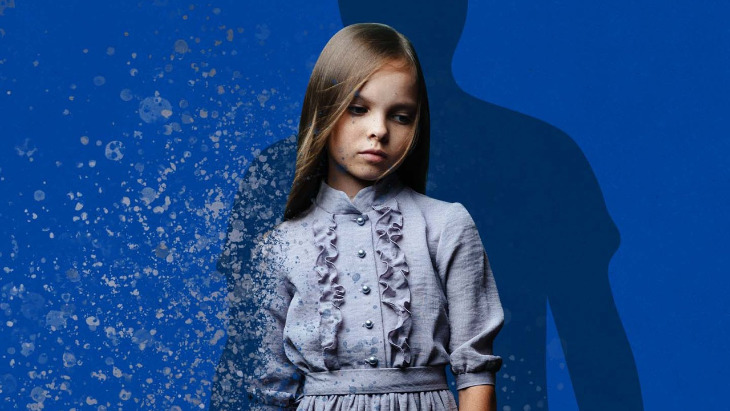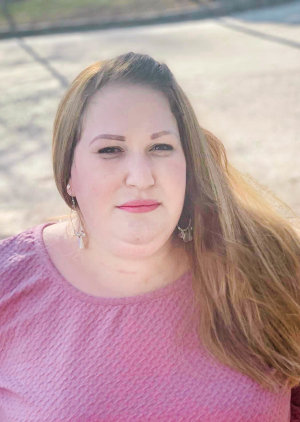 Iran’s Attack on Israel
Iran’s Attack on Israel


9 min read
It’s time to free myself from the shackles of shame.
It's time to tell my story of sexual abuse.
I’ll be honest; I’m absolutely terrified right now. Scared out of my mind that by opening up to myself and to you, I’ll be judged, or worse, found guilty. After all these years I’m still afraid to find out that it was all my fault.
I can only live in hiding for so long and I’ve reached a point where I’m ready for my secrets to emerge.
It’s time to free myself from the shackles of that shame. It’s time to tell my story.
Here’s the truth: I’m an expert at numbing.
Emotional, physical, mental – take your pick.
For me, numbing is the strategic way in which my mind and body attempt to gain control of my messy, chaotic thoughts, emotions, and behaviors by gently beating them into submission. After many years of practice, it has become an acquired reflex; any time I am in danger of experiencing even the slightest discomfort, a subconscious switch is flipped that instantly envelopes me in metaphoric bubble wrap.
I’d only survive if I left my body and let my emotions drain out of me. I was there physically, but the rest of me was floating high above where monsters didn’t exist.
To some, this may seem like a brilliant plan, to others a very unhealthy practice. But to me? I never even debated the pros and cons of going through life completely cut off from my feelings. Instead, it was an instinctive decision born out of the necessity to protect myself from the pain to which I was being subjected.
When I was six years old, I was sexually abused regularly by an unrelated adult in my life. He bought me flowers, gave me chocolate and presents, and then when he had succeeded in making me pliable and trusting, shattered the bubble of innocence that was my existence.

It was in those moments of abuse that I realized I would only survive if I left my body and let my emotions drain out of me. I may have been there physically, but the rest of me was floating high above, in a place where monsters didn’t exist.
The more abuse I endured, the less connected I became to my thoughts and feelings. Months of abuse contradicted everything I had learned up until that point- that the world was, for the most part, a sunny, safe place to be. I began feeling bewildered and lost; nothing made sense. While my friends were together playing ‘house’ and ‘school’, I was scribbling the words ‘I feel blue’ and crying myself to sleep.
The effort it took to keep my unfathomable secret hidden began to take a toll on my body. Each time I looked in the mirror I could swear I was slowly disintegrating from the fear and shame that were weighing me down. I desperately wanted to confide in someone, to let them know that I was falling apart.
But I couldn’t.
I was terrified that no one would love me anymore, that they would think I was evil.
I was terrified that no one would love me anymore, that they would think I was evil. So I continued to be the ‘good girl’ everyone expected me to be, never considering the fact that doing so was destroying me.
The abuse lasted a year and ended when I was seven. My memories from ages seven through twelve are hazy and amorphous, as though I was sleepwalking through life. I hadn’t yet learned how to completely numb my thoughts and feelings, and I remained a quiet and secretive child who was often depressed and anxious. Much to my parent’s dismay, I became obsessed with reading books about the Holocaust, chronic illness, and death, and would burst into tears at random times for no obvious reason.
I didn’t have the language to express what had happened, nor could I fully comprehend how I felt about it. My thoughts and feelings manifested as stomachaches and headaches instead, and since no doctor could find a cause for them, I was labeled a hypochondriac and accused of making it up to get attention. Eventually, I began to dismiss my physical symptoms as well, telling myself that I was imagining them.
Throughout junior high and high school, I did everything in my power to smother my painful emotions. I was mortified by the strength of my depression; the way it broke me down and took control of me. The cycle of shame, depression, and self-loathing continued until I became absolutely desperate to make it all disappear. I stopped eating after discovering that the pangs of an empty stomach overshadowed any other emotion. The hungrier I became, the better I felt.
At the age of fifteen, I met a boy who made me feel safe enough to let my guard down. When I was with him, I didn’t feel the need to bury my feelings to protect myself. In fact, I savored the intensity of the untempered happiness and excitement that constantly bubbled up from my heart. My life was suddenly full of the vibrant colors of love and passion, a stark contrast to the dull, colorless days that had been my normal for as long as I could remember. I didn’t feel the need to starve myself anymore, as I was no longer threatened by difficult emotions.
I thought I had healed.
The explosions of color I so readily embraced were no match for the years of trauma I had yet to process in therapy.
We got married four years later and I was the happiest I had ever been. But I learned soon after that despite their incredible vibrancy and beauty, the explosions of color I so readily embraced were no match for the years of trauma I had yet to process in therapy.
All I wanted was to feel totally present with the man I love but I couldn’t because even the slightest touch would trigger flashbacks. In those moments, it felt like I was being violently pulled out of the warm safety of our home and into the hell where my abuse had taken place so many years before. I no longer felt like an adult but the vulnerable six-year-old girl I had once been.
I had hoped that the flashbacks would ease with time, but they continued. I endured them in silence, trying to keep my torment hidden from the one person who made me feel safe. I feared that he would be in pain if he knew how much I was suffering.
In the years that followed, I knew I was blessed to have a loving husband, two wonderful children, close family, and great friends, but I was still suffering from dissociation and flashbacks. Having all these people in my life made me want to get better.
I started therapy and worked towards the moment I felt ready to share the trauma I had experienced with my husband and loved ones. The incredible support and validation I was fortunate to receive helped keep me tethered to reality and prevented me from losing myself while I processed my traumatic memories.
I wish I could say that my life magically transformed after that. Healing doesn’t happen linearly and I soon fell back into the grips of my trauma and started numbing myself again. Instead of processing my feelings of heartbreak, loss and grief, I spent most of my time sleeping those feelings away and sitting in front of the TV for hours on end. I was barely functional.
With the support of my husband, I finally admitted to myself that I needed more help than my usual once-a-week therapy. After researching numerous options, we made the decision that I would go to a residential treatment center in Florida for people with complex post-traumatic stress disorder.
There was no place to hide from my emotions there. I tore myself wide open, shattered the barriers that held my emotions captive and began the long process of putting myself back together.
I spent five weeks away from my family doing the hardest emotional work I had ever done. There was no place to hide from my emotions there; I was forced to face my demons head on. Through journaling, meditation, yoga, group therapy, equine, art and music therapy, I once again tore myself wide open, shattered the barriers that held my emotions captive and began the long process of putting myself back together.
I found myself feeling deeply for the first time in years. It wasn’t easy, as my mind was an exposed nerve, raw and vulnerable. During one particularly cathartic group therapy session, as I laughed and cried simultaneously, I came to the realization that in order to experience happiness I needed to open my heart to sadness as well. The magnitude of that statement changed my world; joy, pleasure, gratitude and contentment were all possible as long as sorrow, despair, disappointment and loneliness were embraced as well.
I left Florida five weeks later with a better grasp of my emotions and healthier coping skills. For the first time in my life, I believed that I could get better.
My trauma had taken up so much space in my inner world that I couldn’t form my own identity. I had no idea who I was, what my real thoughts, feelings and opinions were.
As I began to heal, the cloud of the trauma started to lift. For the first time, I had the resources within me to help me figure out who I was and who I wanted to be; what was important to me, and what I valued and aspired to.
I share my story in the hopes that someone out there will find strength in knowing they, too, are not alone.
These days, the hardest value for me to practice is presence. Presence when it’s easy, but also when it’s painful or hard or sad. I do so by recognizing my emotions and respecting them; looking inward into my core instead of reaching outward to find ways to numb. Connecting to others who have had a similar life experience also helps; being able to guide them towards healing as they help me do the same.
For most of my life, I thought I had to endure this burden alone.
Healing began when I realized I didn’t have to.
I share my story in the hopes that someone out there will find strength in knowing they, too, are not alone.
This article originally appeared on The Layers Project Magazine, where you can find more meaningful stories about Jewish women. Click here to purchase the new book from The Layers Project, "Layers: Personal Narratives of Struggle, Resilience, and Growth From Jewish Women". Use code Layers10 for 10% your order.
